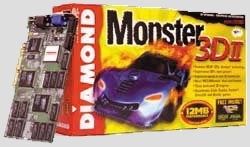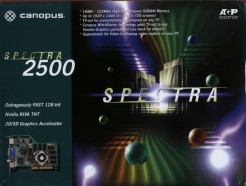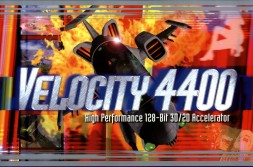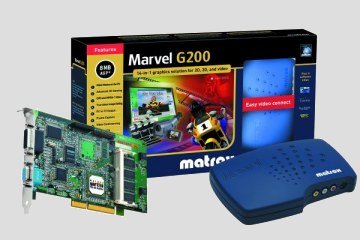 |
|
|
|
In the Forums... |
Posted: November 11, 2000 Written by: Dustin "TimmyC" Jones My 3D Experience My first 3D accelerator was a PowerVR card. It was a Matrox M3D, which had a PowerVR PCX2 controller; the second generation PowerVR. Quite honestly, when I picked it up for about $100 at my local hose-you retailer, I was totally impressed by the box. If you want to see what it had to offer, check here. I installed it, then tried out Quake. (Not GL) I was really confused, I didn't see any difference, then I remembered GL Quake and got that, and clumsily set it up and got it working. It ran so slowly on my 486 33 MHz box that it wasn't even funny. I gave up on it and tried the two full games it came with: Hexen II and Ultimate race. Hexen II, being of the Quake engine, ran worse than Quake. But Ultimate Race actually ran quite well, since it was fully optimized for the PowerVR chip. I was pretty blown away at the quality, but that soon faded and I took it out. :) Return of 3dfx The next big jump in 3d acceleration was once again from 3dfx in the form of SLI, and their Voodoo 2 chip. I'm sure most of you know what SLI is, but for the few that don't; I will give a basic explanation. SLI, which stands for Scan-Line Interleave, is a method hooking two of the same video cards together so they share the video load with each other, each rendering half of the screen (in an interlaced fashion). This was some cool technology, and allowed for some massive frame rates at high resolution (1024x768 with most Voodoo2s in SLI mode).   Two Voodoo2s. Left: Metabyte's Wicked3D; right: Diamond's Monster3D II. More from the Competition All the while, other companies like Matrox, ATI, S3, and Nvidia were pumping out their chips and the whole 3D acceleration thing has officially turned into war. Now it seems all the manufacturers had their own chipsets in development. Rendition was busy with their V2200, 3dfx had the Voodoo rush and Voodoo 2, and S3 had the Savage 3D and Virge line, to name a few. Along with all those power house chipsets, AGP was also around now, replacing the aged PCI with more bandwidth and all the other jargon once again adding a big 'ol bucket of gasoline to the already raging 3D acceleration fire. 

Two TNTs. Left: Canopus' Spectra 2500; right: STB's Velocity 4400.  The awesome (and expensive) Matrox G200 TV. Later came the G200, TNT 2 / Ultra, Voodoo 3... then even later, the G400, then GeForce, then GeForce 2 and Voodoo 4/5... which like basically all new high-end video cards, offered greater speed, image quality, and features. You probably know this part of the story, because you've most likely witnessed it all. Conclusion I really hope you gained something from this article, and I didn't waste time writing it. You better have! But really, how could you not just sit in awe at the whole 3D acceleration craze? It's amazing. The next time you bitch about your GeForce going too slowly, think about what it would be like with out 3D acceleration, you ungrateful brat! Erk, thanks for reading! If you would like to see more articles of this type, drop me an e-mail! |
||
|
| |||
|---|---|---|---|